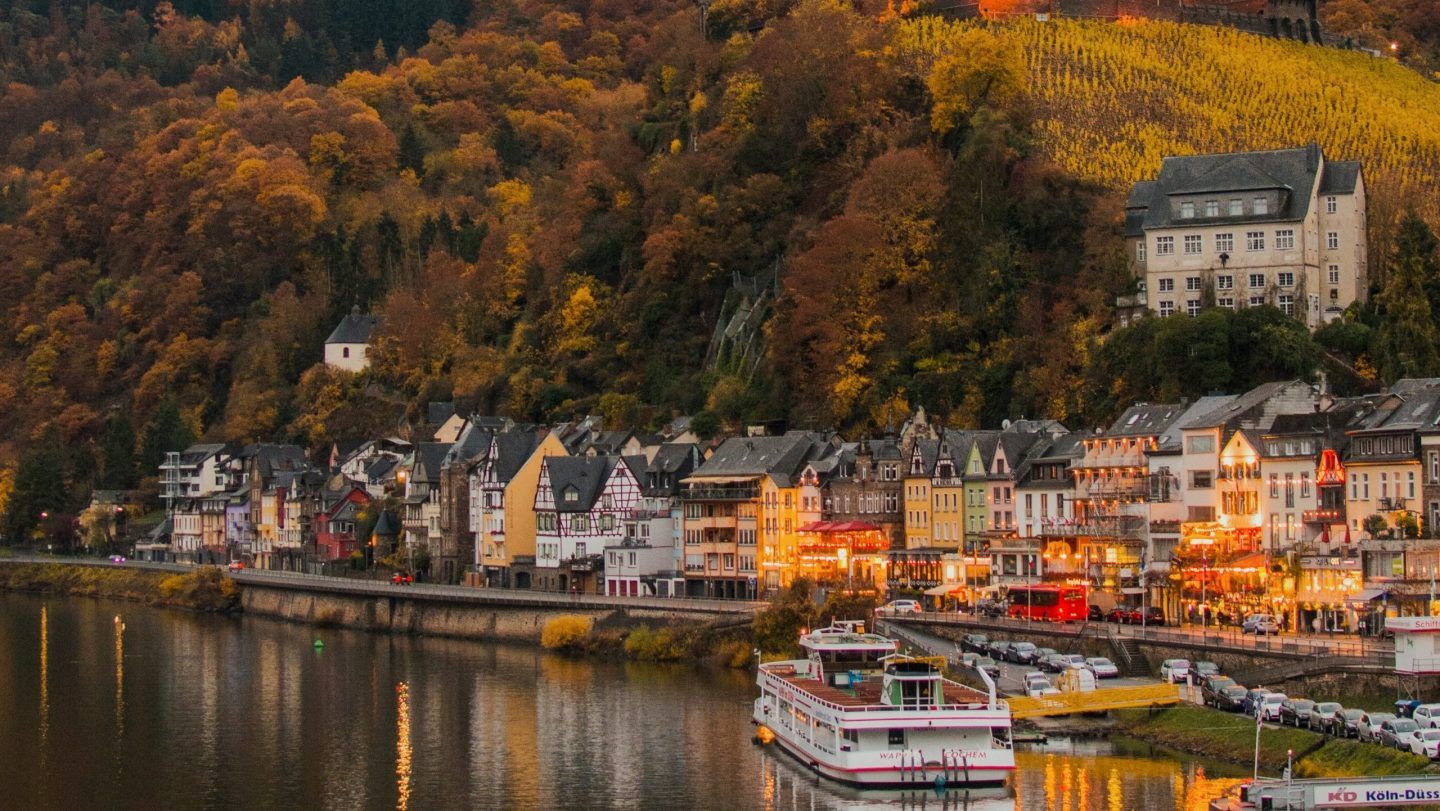
Welcome
Create your free Unicorn account to bid in our legendary weekly auctions.
By continuing, you agree to the Unicorn Terms of Use, Privacy Policy, Conditions of Sale, and to receive marketing and transactional SMS messages.
Already have an account?

Let’s get you approved to bid
To place your first bid, you’ll need to get approved to bid by confirming your mailing address and adding a payment method
I Just Got Back From Germany. Here’s What I Saw—And What Surprised Me—In The Mosel.
Do you like every facet of terroir revealed in your glass? Are you a dynamic drinker who appreciates wines made in every style from sweet to dry and still to bubbly? Then the Mosel has something for you.
Clara Dalzell · Jan 13, 2025

Recently I traversed the majority of the inconceivably winding Moselle river valley through western Germany, with pit stops along the Ruwer and Saar valleys. Winningen, a quaint village (in a region rife with quaint-everything) was my first stop, 10 minutes south of the Moselle’s end, where it streams into the mighty Rhine. Four days later I found myself 90 miles south as the crow flies, with nearly 125 miles of river behind me, in the village of Nittel, just a stone's throw from Luxembourg. I packed in 15 wineries, tasted 150 wines, and attempted to understand just a little more of this place I find so magical.
Clara's Mosel Wine Trip Notebook
- Do you like every facet of terroir revealed in your glass? Do you crave acid and structure-driven wines? Are you a dynamic drinker who appreciates wines made in every style from sweet to dry and still to bubbly? Does the contradiction of concentration meets levity, and less is more, appealing to you? How about multidimensional kaleidoscopes of flavors and textures? Are you a connoisseur of the classics and/or do you have an appreciation of modernity? Are you looking for growers at the top of their game? Great. Then you, too, will agree that the Mosel is the best white region on earth. Unless you count the Saar on its own, which you should, in which case it’s the best—because it's all of the above, turned up to 11.
- What export markets like the U.S. and Scandinavia want from their wines (high acid, contemplative) versus what German drinkers want from their wines (low acid, dirt cheap) varies significantly. This has led to a fractured industry–wineries producing vastly different wines from the same vineyards for different markets–and often a generational divide of what wine from places like the Mosel should be. The lack of consistency is one of the many reasons why German wine, and Mosel wine in particular, has had difficulty regaining its former glory: it can’t agree on what that is. And Germans don’t seem to be into the best of what Germany has to offer.
- There are precious few women winemakers in the Mosel. I asked everyone I met who else was out there and the list was still embarrassingly short. Katarina Prum of Joh. Jos. Prum is the first name on everyone’s lips, and has possibly surpassed her father in reputation (and he’s the one who put JJ Prum on the map). Rebecca Materne and Janina Schmitt of Materne & Schmitt in Winningen were my second stop and are the only female duo I know of. Alexandra Künstler shares the spotlight with her partner, Konstantin Weiser. Nadine Haart, Rita Busch, and Rosalie Curtin are all out there working side by side with their husbands and partners, but their names are not on the labels. We need more women in wine everywhere, but especially here.
- “Slate is the unvarnished truth.” - Julian Haart, while tasting through his 2024 barrel samples. (I couldn’t agree more.)
- Climate change continues to be a boon for German and Mosel vintages. There hasn’t been a truly bad vintage since 1987. Yields, on the other hand, have been atrocious six years running. In 2023 most estates in the Saar lost 90 percent of their fruit, and 2024 wasn’t much better.
- So while there are very few 2023s out there, what is out there is fucking delicious. Some growers are comparing them to 2019 for their combination of power and high acidity. Only a couple of cuvées felt a little ripe, with some roasted peach or tropical notes. Nothing fell flat. These wines felt clean, pure, with some high fruit intensity and concentration, but enough lift for another batch of delicious, precise wines. I find them easier to drink young than the 2019s, but they will be able to go the distance in your cellar.
- I only sampled 2024s from Julian Haart, Daniel Twardowski, Weingut Falkenstein, and Jonas Dostert. I have never had so many incredibly delicious barrel samples. And not just because those are four of the best German winemakers, but because the wines were lights out. German wine geeks will remember all the talk of 2021 being a throwback vintage, to when growers struggled for ripeness and acidity was a weapon, something to be defended against, not fought for. 2024 is right along the same lines, maybe even harder to ripen, and also with devastatingly low yields. Frost hit in April, followed by hail, an unwinnable battle against the hail, and never ending rain. Most growers lost 50 percent off the bat. My beloved Saar lost 90 percent. If you get offered ‘24s, buy.
- 1,000 hectares of steep vineyards are projected to be abandoned within a year. Most sites are farmed by hobbyists who are growing too old for the intense work such vineyards require. Negative ROIs rub salt in the wound: prices for bulk wine are 70 cents to 80 cents per liter, while production costs run between seven euros to 10 euros per liter. So, if you’ve always dreamed of being a vigneron, here’s your chance: grand cru sites available for pennies on the dollar. Move fast!

extendedBiddingModal.title
extendedBiddingModal.subtitle
extendedBiddingModal.paragraph1
extendedBiddingModal.paragraph2